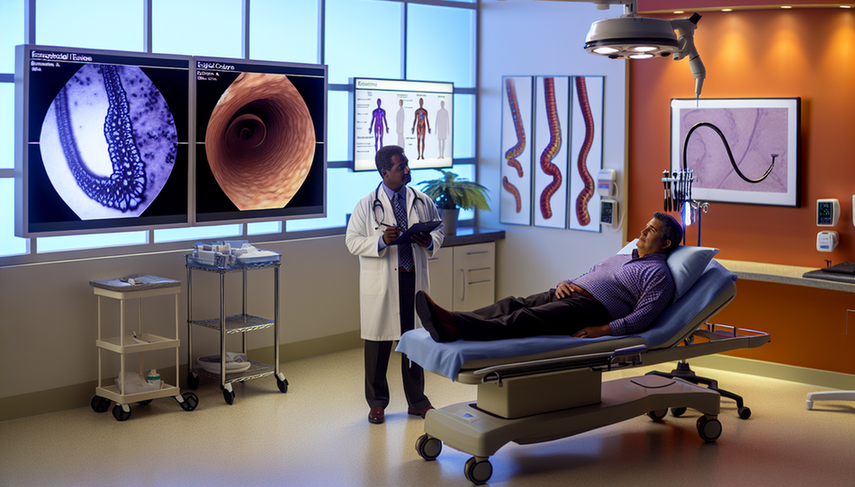Esophageal Cancer and Achalasia: Risk Factors and Endoscopic Findings in Dysphagia Evaluation

Esophageal cancer and achalasia are two distinct conditions that share certain risk factors and can present similar symptoms, such as dysphagia. Achalasia is a disorder of esophageal motility that may predispose individuals to the development of esophageal cancer, particularly squamous cell carcinoma. This article explores the risk factors associated with both conditions and the endoscopic findings that can aid in their diagnosis and management.
Risk Factors and Endoscopic Findings
Esophageal cancer primarily presents in two forms: squamous cell carcinoma and adenocarcinoma. Squamous cell carcinoma is more common in non-industrialized countries and is associated with risk factors such as tobacco use, alcohol consumption, and achalasia. Conversely, adenocarcinoma is more prevalent in developed nations and is linked to chronic gastroesophageal reflux, obesity, and smoking [1].
Achalasia is a well-documented risk factor for the development of squamous cell carcinoma of the esophagus. Studies have shown that patients with achalasia have a significantly higher risk of developing esophageal cancer compared to the general population [2]. Endoscopy with biopsy is crucial for the early detection of neoplasia in these patients, as the sensitivity and specificity of endoscopic inspection for assessing inflammation or dysplasia are low [3].
Endoscopic findings in patients with achalasia may include stasis esophagitis, epithelial hyperplasia, and multifocal dysplasia, which can progress to squamous cell carcinoma. Esophageal manometry is an essential diagnostic tool to confirm achalasia, characterized by the absence of lower esophageal sphincter relaxation and aperistalsis in the esophageal body [4].
Conclusions
The relationship between achalasia and esophageal cancer underscores the importance of endoscopic surveillance in patients with achalasia, especially those with additional risk factors such as regular alcohol consumption and a prolonged history of the disease. Early detection through endoscopy with biopsy can significantly improve prognosis by identifying precursor lesions or cancer at early stages. Understanding the risk factors and endoscopic findings is crucial for the effective management of these conditions and the prevention of severe complications.
Referencias
- [1] Esophageal Cancer
- [2] Risk of Esophageal Cancer in Achalasia: A Matched Cohort Study Using the Nationwide Veterans Affairs Achalasia Cohort
- [3] Long-term risk of oesophagitis, Barrett's oesophagus and oesophageal cancer in achalasia patients
- [4] Incidence and risk factors for the development of epidermoid carcinoma in oesophageal achalasia
Created 6/1/2025
